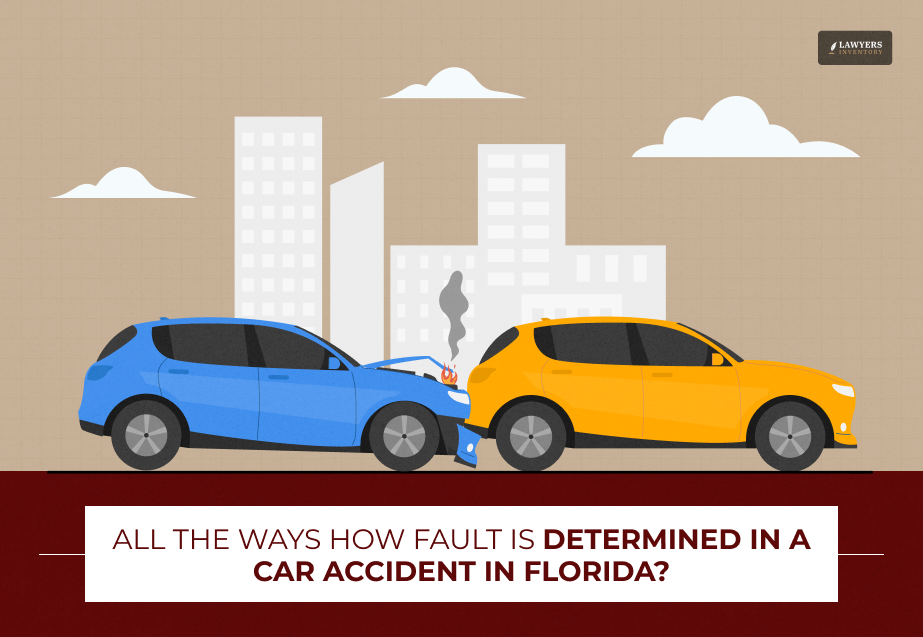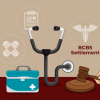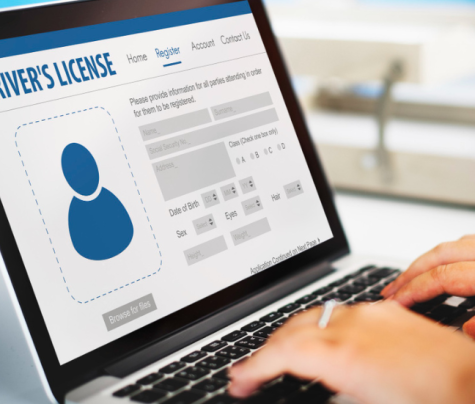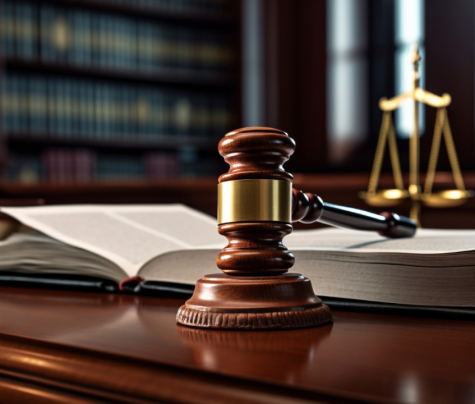
Florida provides travelers with some of the most scenic roadways and a sunny sky, but at any point in time, a wonderful moment can turn into a tragedy. Accidents ruin everything within seconds.
The aftermath of Car accidents turns roadways quickly into a backdrop of confusion.
Hi, in today’s blog, we are going to learn how fault is determined in a car accident.
How Is Fault Determined In A Car Accident?
The state’s ‘no-fault’ insurance system covers the initial medical payments, ensuring that everyone gets medical care. But the challenge arises with the question:
How is fault determined in a car accident? The victims or the claimants find it difficult to determine who is truely at fault.
Determining full plays is the most crucial role in deciding the property damage claims. The claimant seeks compensation based on the fault.
Compensation for serious injuries that extend beyond the limits of personal injury protection (PIP) coverage.
1. Proving Negligence
Determining fault plays a crucial role in proving negligence in a Florida car accident. A driver who acted negligently, causing the accident, is legally at fault. The legal framework defines negligence based on four key elements :
2. Duty
Drivers in Florida are duty-bound to follow certain regulations while driving. The operators of the vehicle should drive it in a safe manner.
3. Breach
Drivers breach their duty as they fail to act like a reasonably prudent person. Authorities have classified traffic violations in a massive range. This list includes clear traffic violations like running a red light to others.
Authorities have included other subtle carelessness, like distracted driving, under breach of duty.
4. Causation:
The claimant should prove the breach of duty. The legal guideline directs them to prove the fault of the accused. The claimant can not make a claim without any proof.
To understand the fault in a car accident, proof is important.
5. Damages:
The accident should cause a significant amount of damage to pursue the claim. Property damage to vehicles, medical expenses, lost wages, or pain and suffering.
The Sunshine State’s Shift: Understanding Modified Comparative Negligence
Florida law employs a “modified comparative negligence” system to apportion fault when more than one party may have contributed to an accident. In March 2023, the state transitioned from a “pure” comparative negligence rule. The current modified system determines eligibility for recovery of damages based on the percentage of fault attributed to the injured party.
The new framework reduces your potential compensation based on your percentage of blame in the incident.
Example:-
A claimant should get $80,000 instead of $ 100,000, even if the claimant is 20% guilty.
People who are more than 50% at fault for the accident cannot recover any damages from the other party.
This change makes the accurate determination of fault more critical than ever for injured individuals seeking justice.
The Evidence That Speaks Volumes: How Is Fault Determined In A Car Accident?
A thorough investigation plays a key role in setting the course of the case. The insurance companies collect a variety of evidence. The legal professionals also often piece together the evidence. The legal professionals analyze to understand the exact moment of the collision.
Miami car accident attorney Jose M. Francisco emphasizes the proactive role legal counsel plays in this process.
The clients suffer from pain and financial stress right after the incident takes place. Also, evidences disappear under their nose.
The insurance companies take advantage of the situation to build their narrative.
“After a crash, clients are often in pain and dealing with immediate medical and financial stress. They don’t realize that evidence can disappear quickly and insurance companies have already started building their own narrative of the event,“_ States Francisco.
“Our first priority is to launch an independent investigation. We secure physical evidence, track down witnesses, and analyze police reports to build a case that clearly demonstrates liability. It’s about telling the true story of the accident, not the one that’s most convenient for the insurance carrier.“
Here is the key evidence that you should focus on.
1. The Police Report
While not always the final word on liability, the official police report is a vital document.
It contains the officer’s initial observations, witness statements, a diagram of the accident scene, and any traffic citations issued.
Insurance adjusters heavily rely on this report in their initial assessment of fault.
2. Physical Evidence
The scene of the accident itself can provide a wealth of information.
The location and severity of damage to the vehicles, the presence and length of skid marks, and any debris on the roadway can all help to reconstruct the events of the crash.
3. Photographic And Video Evidence
Photographic evidence plays a crucial role. The back camera of the phone can play a vital role in getting the perfect image of the crime.
The victims can capture pictures of the final resting position of the vehicles and the position of the tires.
Drivers should install dashcams to capture proper footage of the occurrences. Involved people should also collect the footage from the CC TV cameras of nearby businesses.
4. Witness Testimony
The legal aid seeks the eyewitnesses; this list includes other drivers and pedestrians. The pedestrians and other drivers provide an objective perspective of the accident.
Moreover, the witnesses often provide testimonials tha contradict the accounts of the involved driver. This provides crucial information.
5. Expert Analysis
In complex cases, accident reconstruction experts may be retained to analyze all available evidence and provide a scientific opinion on how the accident occurred and who was responsible for the accident.
How Is Fault Determined In A Car Accident With Common Traffic Violations As Indicators Of Fault?
Many car accidents are directly caused by a traffic law violation. Furthermore, some of the most common infractions that strongly suggest fault include:
- Speeding: Overspeeding reduces a driver’s reaction time and increases the severity of a crash.
- Running a Red Light or Stop Sign: Failure to obey traffic signals is a clear breach of a driver’s duty of care.
- Driving Under the Influence (DUI): Operating a vehicle while impaired by alcohol or drugs is a serious offense that will almost always result in the impaired driver being found at fault.
- Following Too Closely (Tailgating): Rear-end collisions are frequently caused by one driver following another too closely, leaving insufficient space to stop safely.
- Improper Lane Changes: Failing to signal, check blind spots, or ensure a lane is clear before moving over can easily lead to a collision.
How Is Fault Determined In A Car Accident? Things To Keep In Mind
The victims can find determining fault in a Florida car accident to be a daunting task, especially while they are recovering from injury.
Furthermore, the modified comparative negligence system necessitates a thorough and accurate assessment of liability.
Moreover, people involved in a crash should understand the principles of negligence and the types of evidence that will be scrutinized.
Also, it is the first step toward protecting their rights and ensuring a just outcome.
Read Also:
- You Need To Call A Truck Accident Lawyer Right Away
- How to Collect Evidence for a Strong Personal Injury Claim
- What to Expect During the Negotiation Phase of a Pedestrian Accident Case











0 Reply
No comments yet.